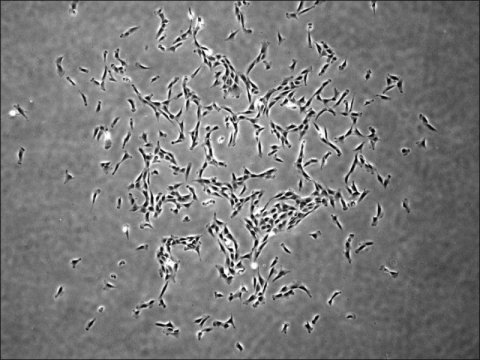
Clementia Announces Updated Phase 2 Part B Data on Palovarotene for FOP
Clementia Pharmaceuticals Inc., a clinical-stage biopharmaceutical company innovating treatments for people with ultra-rare bone disorders and other diseases, today announced updated data from the open label extension (“Part B”) of its ongoing Phase 2 clinical trial of palovarotene in fibrodysplasia ossificans progressiva (FOP).
“These updated data continue to support the potential for palovarotene in FOP, an ultra-rare and devastating bone condition,” said Clarissa Desjardins, Ph.D., founder and chief executive officer of Clementia. “Twelve-week flare-up outcomes for patients treated with palovarotene in our Phase 2 trial indicate a consistent treatment effect of approximately 73 percent reduction in mean new bone growth, or heterotopic ossification, and palovarotene was generally tolerated in both adult and pediatric patients. However, we observed that nearly half of the patients in Part B had flare-ups that went untreated mainly due to the criteria for flare-up treatment specified in the Part B protocol. The flare-up treatment criteria in the MOVE Trial, on the other hand, are expected to result in more frequent use of flare-up up dosing in response to flare-up symptoms. First and second interim analyses from the MOVE Trial are expected to occur in the second and third quarters of 2019, respectively, and are designed to assess new HO in treated patients as compared to external natural history study controls. We look forward to those data readouts next year and anticipate that they’ll reflect the true potential of palovarotene in patients who urgently need a treatment option.”
Updated 12-Week Flare-up Imaging Results
The final set of 12-week flare-up imaging data were presented today in a poster session at the Mechanistic and Therapeutic Advances in Rare Skeletal Diseases, a meeting organized by the Rare Bone Disease Alliance in association with American Society of Bone and Mineral Research (ASBMR), and will also be presented on Monday, Oct. 1, 2018 in a poster session at the ASBMR 2018 Annual Meeting (Presentation Number: MON-1066). The data demonstrate a consistent greater than 70 percent reduction in new heterotopic ossification (HO, or bone growth in abnormal places) across three different dosing regimens, as detailed below:
| Treatment group | N= | Volume of new HO (mm3) at 12 weeks | % reduction | p=value1 |
| Placebo/untreated | 46 | 11,014 | – | – |
| Palovarotene 10/5mg | 46 | 2,731 | -75% | p=0.05 |
| Palovarotene 20/10mg | 15 | 3,045 | -72% | p=0.02 |
| Palovarotene chronic / flare-up | 31 | 3,018 | -73% | p=0.16 |
1ANOVA with BCa bootstrap and covariate adjustment
The poster also presents details on 12-week flare-up outcomes at the hips and shoulders, the two most frequent flare-up locations, and flare-ups at these locations result in substantially more bone than flare-ups at other locations. The treatment effect for flare-ups that had any new HO at these locations at 12-weeks varies between 60 and 97 percent reduction in new HO, depending on the treatment regimen.
As previously reported, palovarotene is generally tolerated in our ongoing Phase 2 study. There were dose-related increases in retinoid-associated adverse events (AEs) with most being mild or moderate in severity, and only one patient discontinued participation in the study because of an AE. There were no treatment-related effects on laboratory or ECG findings or on skeletal growth in pediatric patients.
Updated 12-month Whole-body CT Scans (WBCT)
In addition to the data presented in the poster, the company announced updated WBCT data that demonstrate new HO at 12 months in the palovarotene treated per protocol group of 23,335 mm3, a reduction of 3,639 mm3, or 13 percent (n=33, p=ns), versus the 26,974 mm3 new HO volume observed in untreated NHS patients (n=58). Updated review of the data indicates that 47 percent of patients (n=15) had flare-up symptoms that were either untreated or under-treated. Due to the narrow definition of a flare-up in Part B, which required at least two flare-up symptoms and did not allow for flare-up dosing in connection with intercurrent flare-ups, these patients did not receive the 20/10mg regimen for their flare-up symptoms. These patients exhibited a mean new HO of 39,443mm3. In those patients who did receive the 20mg/10mg regimen (n=9) for all reported flare-ups, the mean volume of new HO was 1,787mm3, a 93 percent decrease versus untreated patients.
Clementia believes that the flare-up treatment definition in the ongoing MOVE Trial is expected to result in more frequent use of flare-up dosing in response to flare-up symptoms. Preliminary treatment rates (treated flare-ups per subject month exposure) from the MOVE Trial support this assessment, as the treatment rate in the MOVE Trial is much higher than that observed in our Part B study. As a result of this, the company does not believe that the Part B WBCT data are a reliable predictor of potential outcomes in the MOVE Trial.
Source: West


